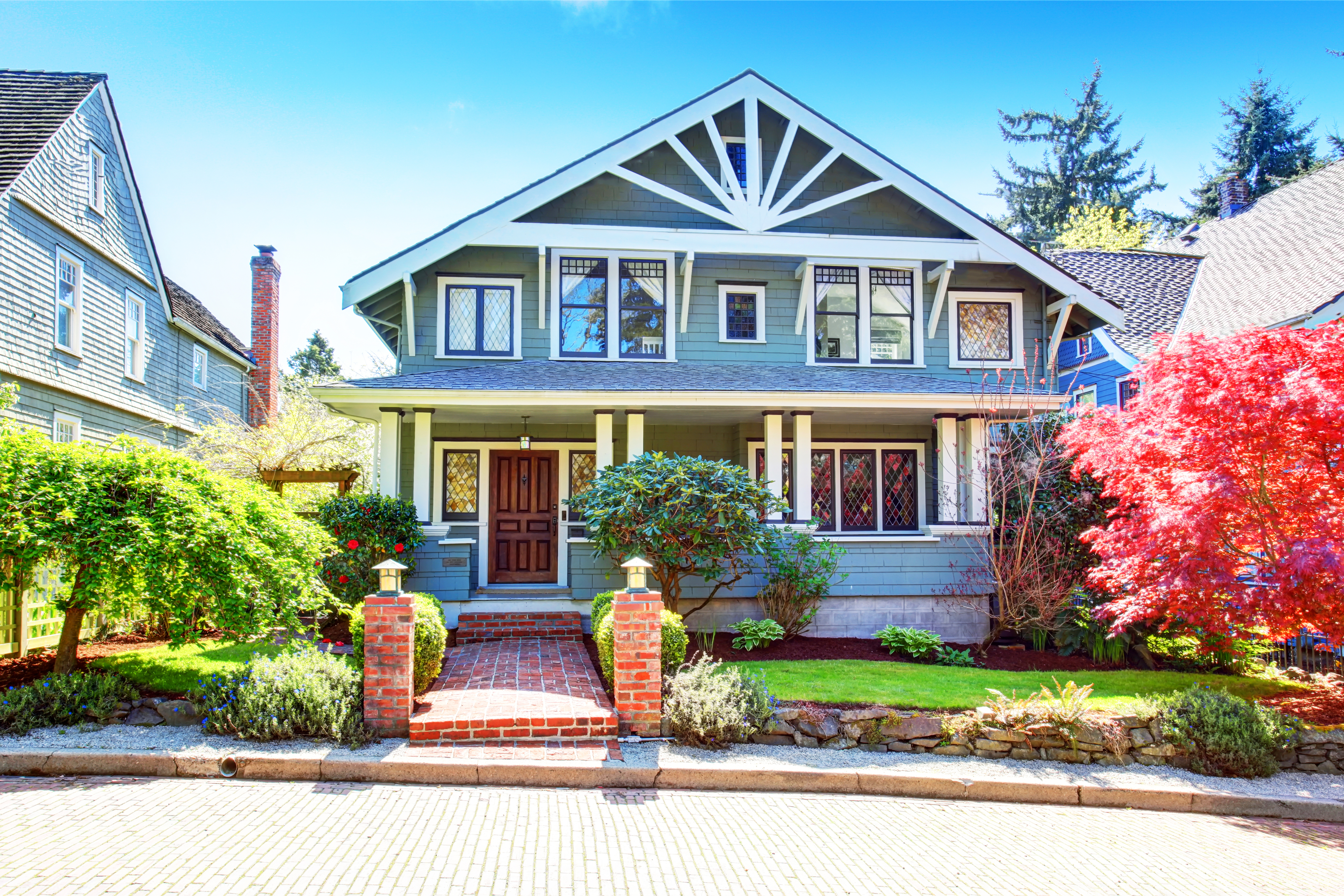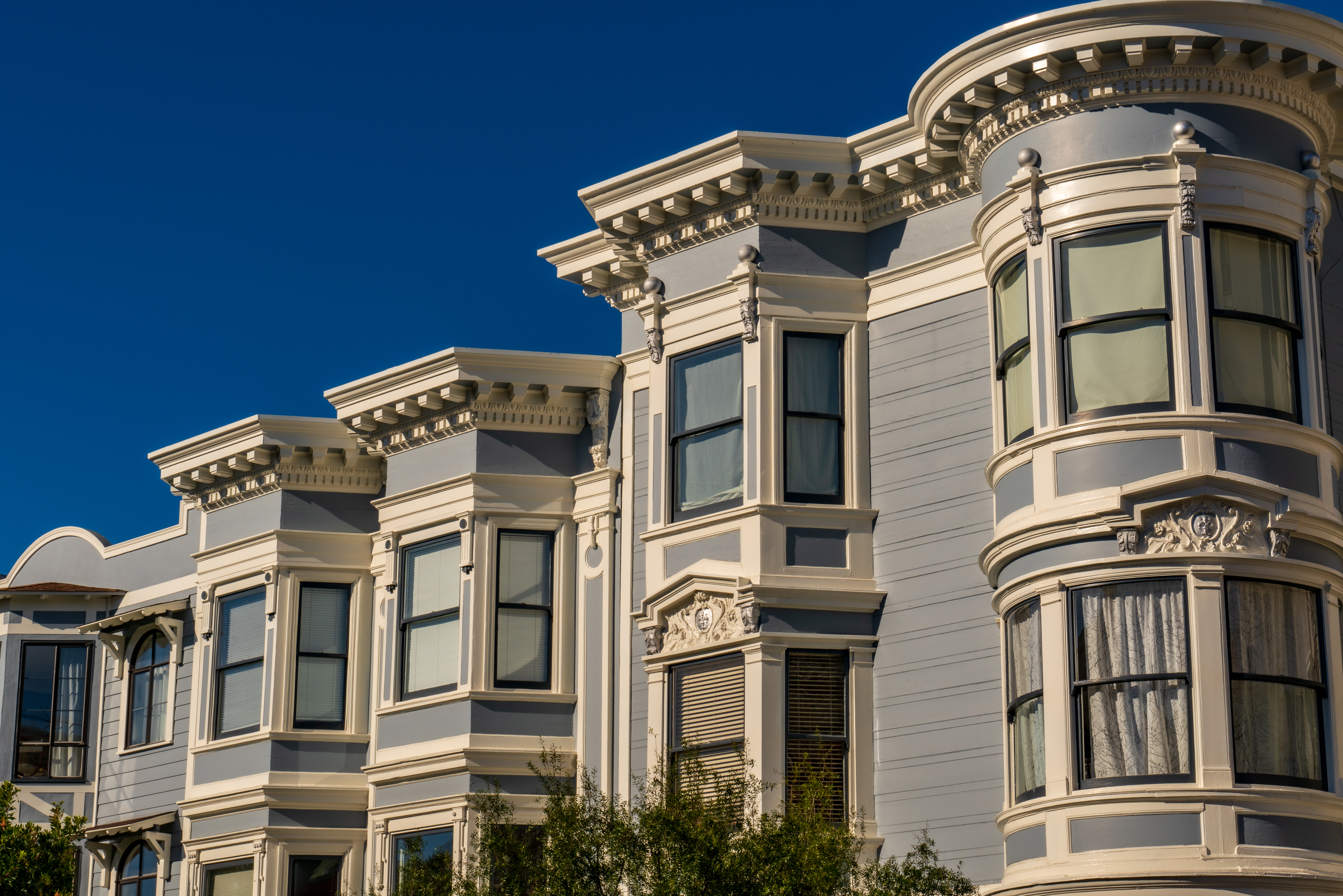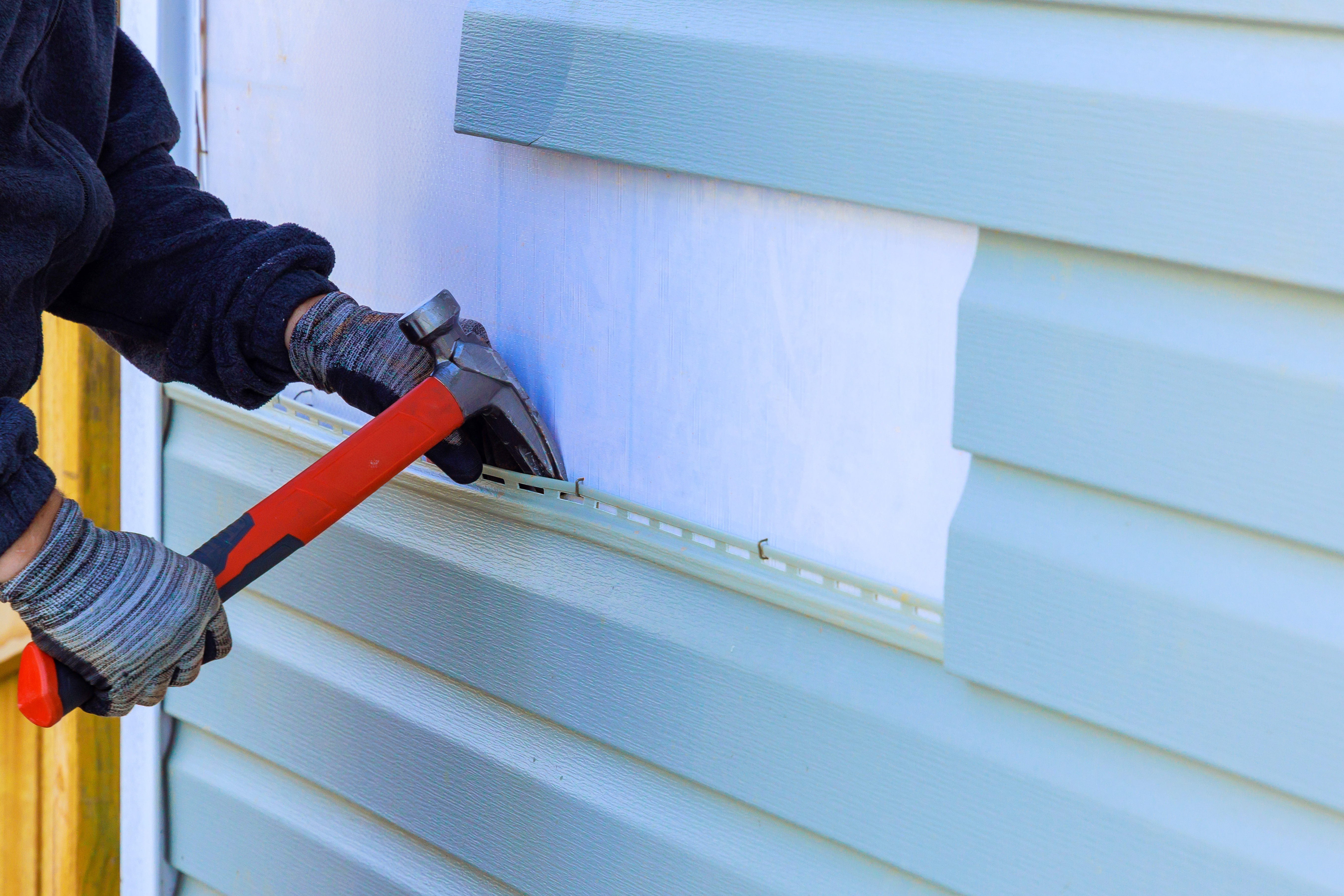
The cost of siding repair varies depending on material, design, and damage. This helpful guide covers the siding repair costs to expect in Columbus, Ohio.
Use this helpful guide to budget for your San Fran siding replacement


Fiber cement and engineered wood are the most popular siding choices in San Francisco due to their durability in the city’s damp, foggy climate.
Permit fees range from $250 to $700, with additional costs for homes in historic districts.
Siding replacements can boost home value by improving curb appeal, energy efficiency, and buyer confidence, especially in competitive markets like the Bay Area.
Siding replacement in San Francisco costs about $10,674 on average, but it can range from $5,702 to $15,980, depending on factors like the home’s size, the materials and the complexity of the installation. Labor costs in the Bay Area run high relative to many other areas, especially for homes with multiple stories or unique architectural features. Let’s dive into how to budget for siding replacement costs in San Fran.
Siding replacement costs in San Francisco depend on a variety of factors. The city’s coastal climate, architectural diversity, and high labor rates influence how much homeowners pay and which siding options make the most sense.
The size of your home affects how much siding you’ll need, while your home’s shape can impact labor and installation time. For instance, a simple, one-story home will be less expensive to side than a multi-story house with architectural features like turrets or bay windows since they require more custom cuts and detailed installation work.
| House Size in Square Feet | Average Siding Cost |
|---|---|
| 1,000 | $1,000–$13,500 |
| 1,500 | $1,500–$20,250 |
| 2,000 | $2,000–$27,000 |
| 2,500 | $2,500–$33,750 |
| 3,000 | $3,000–$40,500 |
Choosing the right siding material is one of the biggest decisions in any replacement project. In San Francisco, that choice is often influenced by the foggy coastal climate, historic architecture, and long-term siding maintenance needs.
| Siding Material | Cost per Sq. Ft. | Lifespan | Pros (San Francisco) | Cons (San Francisco) |
|---|---|---|---|---|
| Fiber Cement | $5–$14 | 50 years | Moisture-resistant, fire-resistant, durable, low maintenance | Heavy material, higher installation cost |
| Engineered Wood | $1–$6 | 20–40 years | Looks like real wood, easier to install, more affordable than natural wood | Vulnerable to moisture without proper sealing |
| Vinyl | $3–$12 | 20–40 years | Budget-friendly, low maintenance, many style options | Can fade or crack from sun exposure, less ideal near salty air |
| Wood | $1–$15 | 20–40 years | Authentic appearance for historic homes, can be painted or stained | High maintenance, prone to rot and termite damage in damp climates |
| Stucco | $7–$9 | 50+ years | Energy-efficient, durable when sealed properly, fits some architectural styles | Cracks in seismic areas, expensive repairs if moisture seeps in |
| Brick Veneer | $3–$10 | 70–100 years | Classic look, durable, less weight than full brick | Not common in SF architecture, not ideal for moisture-prone zones |
| Stone Veneer | $5–$11 | 20–75 years | High-end appearance, lighter than full stone, good for accent sections | Expensive, not traditional to SF housing stock, can trap moisture if installed poorly |
| Aluminum | $3–$6 | 20–40 years | Fire-resistant, recyclable, less prone to mold than wood | Can dent easily, offers poor insulation |
In San Francisco’s damp, salty air, even the most durable siding materials age faster. Wood siding may need repainting or patch repairs every few years, while vinyl can crack or fade over time. Fiber cement holds up better, but still benefits from occasional inspections, especially around joints and edges where moisture can sneak in.
Keeping up with maintenance extends the lifespan of your siding and delays the need for another full replacement, which, depending on the material, could happen anywhere from 20 to 50 years after the initial install.
Many homes in San Francisco are pre-war or mid-century builds, which means tearing off existing siding often reveals hidden issues, like rotted sheathing, termite damage, outdated wiring, or layers of previously covered materials.
Plus, the city’s strict disposal rules mean contractors can’t always just toss everything in a dumpster. There are environmental regulations, especially around lead-based paint or asbestos, that can turn a simple removal into a multi-step mitigation project. For these reasons, you should set aside 10% to 20% of your siding budget for surprises during the teardown phase.
Homes with intricate architectural features, like bay windows, decorative trim, or multi-story facades, require more precise cutting and installation, which drives up labor time and cost. Historic San Francisco neighborhoods may also have restrictions on materials or styles, which can potentially increase your costs as well.
San Francisco’s hilly terrain and tightly packed lots can make access a major cost factor. Multi-story homes often need scaffolding or specialized equipment, and contractors may need extra time to navigate narrow driveways, staircases, or alleyways. All of this adds to labor hours and insurance requirements, especially in densely built or elevated areas.
While most contractors include basic cleanup in their quotes, extensive demolition or complex installations may leave behind extra debris. San Francisco has strict waste management guidelines, so proper disposal of old siding and packaging materials may require additional fees or special hauling services.
If you’re working with an architect or designer, those consultation fees can range from a few hundred to several thousand dollars. Design input is often necessary when blending modern siding materials with traditional San Francisco facades, or when coordinating with HOA requirements.

Hiring a siding contractor in San Francisco means budgeting for more than just labor. Between the city’s permitting rules, higher insurance requirements, and the cost of working in dense or historic neighborhoods, local factors can add up quickly.
Local siding contractors in San Francisco charge between $40 to $75 per hour, or $1 to $4 per square foot. Labor makes up a significant chunk of the total project cost, especially for multi-story homes or ornate facades that require custom cutting and careful detail work. You can expect to pay higher rates for contractors with specialized experience in historic restoration or working within tight, urban job sites.
You’ll need a permit for most siding replacements in the city, especially if you're changing materials or structural elements. Permit fees range from $250 to $700 for standard residential projects, but homes in historic districts or with significant architectural detailing may come with higher permitting costs.
In California, siding contractors must hold a C-61/D-41 or B-General Building Contractor license from the Contractors State License Board, so make sure to verify that your contractor is licensed, bonded, and insured.
Sales tax is factored into the cost of materials and is currently 8.625% in San Francisco. It usually doesn’t apply to labor, but confirm this with your contractor, especially if they’re bundling labor and materials into one contract.
For larger or more complex siding projects, you might need more than a general siding crew:
Architect: Hiring an architect is relevant if you're re-siding a historic home or blending materials. Architect fees cost between 5% and 20% of the total project.
Structural Engineers: If your siding work uncovers framing issues or rot that affects load-bearing walls, you may need to hire a structural engineer. These fees usually range from $350 to $800.
Asbestos Abatement Contractors: If your old siding contains lead paint or asbestos, you’ll need to hire a certified abatement pro, which typically ranges from $1,200 to $3,300.
New siding is one of the most impactful upgrades you can make to boost your home’s curb appeal, weather protection, and long-term resale value. In the Bay Area, where home prices are high and buyers expect strong visual presentation, fresh siding can help your property stand out in a competitive market.
Fiber cement siding, in particular, tends to yield a strong return on investment thanks to its fire resistance, moisture durability, and upscale appearance. Upgraded siding also improves home efficiency and weather resistance, both of which are major selling points in a city that deals with moisture, fog, and salty air.
Home is the most important place on earth, which is why Angi has helped more than 150 million homeowners transform their houses into homes they adore. To help homeowners with their next project, Angi provides readers with the most accurate cost data and upholds strict editorial standards. We survey real Angi customers about their project costs to develop the pricing data you see, so you can make the best decisions for you and your home. We pair this data with research from reputable sources, including the U.S. Bureau of Labor Statistics, academic journals, market studies, and interviews with industry experts—all to ensure our prices reflect real-world projects.
Want to help us improve our cost data? Send us a recent project quote to [email protected]. Quotes and personal information will not be shared publicly.
From average costs to expert advice, get all the answers you need to get your job done.

The cost of siding repair varies depending on material, design, and damage. This helpful guide covers the siding repair costs to expect in Columbus, Ohio.

Fiber cement siding is durable, fire-resistant, and affordable. Learn more about fiber cement installation costs in Columbus, OH.

New vinyl siding adds value and curb appeal to homes in Columbus, Ohio. Learn about average vinyl siding installation costs in Columbus, Ohio.

How much does clapboard siding cost? This guide reviews cost factors, prices per square foot, and more to help you plan your budget.

Want to learn how to install vinyl siding on a house? Keep reading for insight into the whole process from start to finish.

When you need to reface your home, a low-maintenance siding option can last longer, keep more money in your pocket, and keep your home better protected.